|
|
MUSEUM HAPPENINGS - October 2023
October at Moab Museum
by Moab Museum Staff
|
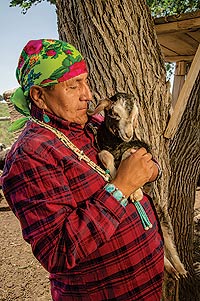 |
| Roy Kady, master weaver and natural dye expert from Goat Spring, Arizona on the outskirts of Teec Nos Pos. Kady is renowned today for his innovative pictorials that feature curved shapes, a highly challenging and rare technique to master. Photo courtesy of Bill Hatcher |
During October, the Moab Museum offers an assortment of opportunities to explore The People’s Tapestry: Weaving Tradition in Navajo Culture, our current temporary exhibition featuring almost 100 historic baskets, rugs, saddle blankets, and dresses created by Navajo (Diné) weavers. Complementing the woven objects, the Museum hosts gallery tours and presentations by nationally recognized Navajo weaver, dye expert, and teacher Roy Kady.
Presentations from Master Weaver & Natural Dye Expert Roy Kady
The Moab Museum is honored to host Mr. Kady for three programs about the Navajo tradition of weaving: the cultural and utility of raising Navajo Churro sheep and the historic and contemporary styles of textiles on display — and a demonstration of his own weaving style.
On Thursday, October 19 (1 p.m. to 4 p.m.), Kady will demonstrate his personal philosophy and style in the Museum’s South Gallery. Attendees will have an up-close view Kady’s weaving and ask questions about how his process evolved and his preferred techniques.
Also on the 19th (6:30 p.m.), Kady will lead a gallery tour of The People’s Tapestry: Weaving Tradition in Navajo Culture, sharing his interpretation of, and personal perspectives about, the diverse array of Navajo (Diné) textiles on exhibit. Kady will speak about the significant weaving and stylistic differences of some of the textiles on display, connecting his experience with the exhibition.
On Friday, October 20 (6:30 p.m.), visitors are invited to join Mr. Kady for a screening of the documentary A Gift from Talking God about his Navajo-Churro Sheep, after which, he will discuss and answer questions about his work.
On Saturday, October 21 (10 a.m. to 1 p.m.), Mr. Kady will demonstrate the process of dyeing natural wool on the Museum Lawn. He intends to prepare three dye baths using vegetal dyes with locally foraged plants and dye skeins of Navajo-Churro sheep wool. Attendees will learn how local plants become pigments and observe the vibrant array of colors that can be created using by the Colorado Plateau’s vegetal dyes.
The Goodman Point Archaeological Project with the Crow Canyon Archaeological Center
Saturday, October 28 and 11:00 a.m. and 2:00 p.m.
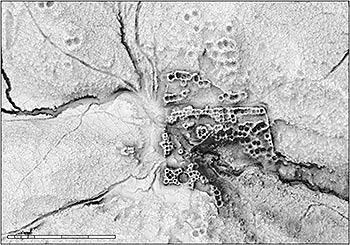 |
| LiDAR scan of the Goodman Point Pueblo. Coffey will share the latest from this seven-year archaeological field project. Photo courtesy of Crow Canyon Archaeological Center |
Grant Coffey, an archaeologist from the Crow Canyon Archaeological Center will discuss The Goodman Point Archaeological Project: Glimpses of a Community Through Time, a seven-year archaeological project to increase our collective understanding of Ancestral Pueblo people’s life in southwest Colorado. Coffey has conducted archaeological work in the northern Southwest for over twenty years and directed the second phase of Crow Canyon’s Goodman Point Archaeological Project.
Goodman Point was named for Indian Creek and Moab cowboy, Henry Calvin Goodman, who first ran cattle there before settling at Indian Creek. He would later run sheep there with his brother-in-law, Moab’s first mayor, Harry Green. Goodman Point was the first piece of land in America preserved for its rich cultural resources. In 1889, it was removed from the lands that could be acquired through the Homestead and Desert Land Acts, and specifically set aside as an Archaeological Reserve, the first federal action to protect such sites in US history.
To learn more about Museum membership, programs, and exhibits, and to read the Museum’s blog and explore online archives and collections, please visit moabmuseum.org • 118 East Center Street, Moab • 435-259-7985
And be sure to mention you read about it in the Moab Happenings.
|
| Moab History 101: For Guides [Open to All Guides] |
|
The Moab Museum and KZMU’s History Hour are pleased to be collaborating on Moab History 101: For Guides — a private, customized training designed to help interested companies & organizations orient their staff to the stories, artifacts, and primary resources available at the Moab Museum. Join us on October 16th at 5:30pm for a public abbreviated version of History for Guides. Museum staff and History Hour host Blaine Reniger will provide an hourlong guided tour of the Museum’s gallery & resources. $15 per person includes Museum admission and program materials.
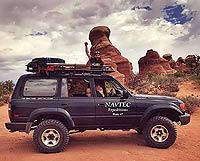 About the Program: This two-and-a-half-hour program is designed for local guides, outfitters, and other tourism-facing staff to help staff in their knowledge about the Moab Valley and beyond. Reniger and Mary Langworthy, Public Programs Manager at the Moab Museum, will kick off the program with an hour-long tour of the Museum talking about big picture stories and key touchpoints throughout Moab’s history. The introduction will include first peoples, an intro to contemporary regional Native communities, exploration by Euro-Americans, ranching and agriculture, mining, the tourism economy and the National Parks and finally, and current events. About the Program: This two-and-a-half-hour program is designed for local guides, outfitters, and other tourism-facing staff to help staff in their knowledge about the Moab Valley and beyond. Reniger and Mary Langworthy, Public Programs Manager at the Moab Museum, will kick off the program with an hour-long tour of the Museum talking about big picture stories and key touchpoints throughout Moab’s history. The introduction will include first peoples, an intro to contemporary regional Native communities, exploration by Euro-Americans, ranching and agriculture, mining, the tourism economy and the National Parks and finally, and current events.
To sign up for Moab History 101: For Guides, contact Mary Langworthy at mary@moabmuseum.org to schedule a time and date and please relay desired topics for the customized history lesson. The cost of this program includes Museum admission for all attendees, program materials, and instruction. Prices also include 5 free admission passes (a $50 value) for any of your staff to use at a later date for a follow-up museum visit. Prices begin at $250 for a group of 10 and under, $450 for groups of 20 and under. Contact the Museum for a custom quote for groups of over 20.
To become a Member today please visit: https://www.moabmuseum.org/become-member/
Contact: Mary Langworthy, History Programs Interpreter, mary@moabmuseum.org, or 435-259-7985.
|
Grand County Ghost Towns:
Stories of Miner’s Basin, Cisco, and more. |
|
The Moab ar
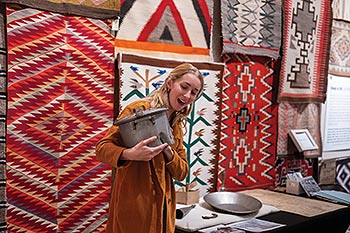 |
| Mary Langworthy, Museum’s Public Programs Manager |
ea is dotted with numerous ghost towns — communities that came into existence due to mining, ranching, and transportation needs, but later depopulated for a variety of factors. The Museum’s archives include a historic postcard that was delivered to the remote community of Miner’s Basin high in the La Sal Mountains in 1904. Join Museum staff to trace the postcard’s path through Grand County, while exploring the fascinating stories of several of the area’s ghost towns. Grand County Ghost Towns features stories from the towns of Cisco, Dewey, Richardson, Castleton, and Miner’s Basin.
Grand County Ghost Towns will take place in the Moab Museum’s South Gallery each Tuesday at 11 am beginning September 12 and concluding October 31. Each program will last between half an hour and 45 minutes.
Regular admission is required to attend. Moab Museum admission is always free for Members.
“Grand County Ghost Towns” held each week at the Museum, Tuesdays at 11am.
|
| Movie & Western Memorabilia Museum at Red Cliffs Lodge |
| 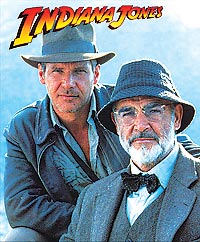 Red Cliffs Lodge, on the banks of the mighty Colorado River, is home to the Moab Museum of Film & Western Heritage. The lodge is built on the old George White Ranch, a key location for nine of the big westerns including Rio Grande, Cheyenne Autumn, Ten Who Dared, The Commancheros, and Rio Conchos. Red Cliffs Lodge, on the banks of the mighty Colorado River, is home to the Moab Museum of Film & Western Heritage. The lodge is built on the old George White Ranch, a key location for nine of the big westerns including Rio Grande, Cheyenne Autumn, Ten Who Dared, The Commancheros, and Rio Conchos.
The late George White was founder of the Moab to Monument Valley Film Commission, the longest ongoing film commission in the world.
In the museum one can learn more about film locations, how the sets are built, and how the filming process is managed on nature’s own sound stage. On display in the museum are production photographs, movie posters, autographed scripts, props from the many pictures filmed in the area, and displays about the western ranching heritage. For information, call Red Cliffs Lodge at 435-259-2002.
 Through the magnificent landscapes of southeastern Utah, writers have been inspired and stories born here. Zane Grey, the famous western novelist, traveled through the area in 1912. His visit inspired him to write his book Riders of the Purple Sage. The book was made into a movie starring Ed Harris and Amy Madigan, and filmed on locations around Moab. Through the magnificent landscapes of southeastern Utah, writers have been inspired and stories born here. Zane Grey, the famous western novelist, traveled through the area in 1912. His visit inspired him to write his book Riders of the Purple Sage. The book was made into a movie starring Ed Harris and Amy Madigan, and filmed on locations around Moab.
A partial list of stars that have made movies in Moab
John Wayne, Maureen O'Hara, Henry Fonda, Lee Marvin,
Rock Hudson, Jimmy Stewart, Richard Boone, Anthony Quinn,
Mickey Rooney, Shirley Temple, Kris Kristofferson, Billy Crystal,
Robert Duvall, Gene Hackman, Bill Murray, Jack Palance, Susan Sarandon, Geena Davis, Ted Danson, Tom Cruise, and many more. |
|
|
|
|
|
|
|
© 2002-2024 Moab Happenings. All rights
reserved.
Reproduction of information contained in this site is
expressly prohibited.
|
|


 About the Program: This two-and-a-half-hour program is designed for local guides, outfitters, and other tourism-facing staff to help staff in their knowledge about the Moab Valley and beyond. Reniger and Mary Langworthy, Public Programs Manager at the Moab Museum, will kick off the program with an hour-long tour of the Museum talking about big picture stories and key touchpoints throughout Moab’s history. The introduction will include first peoples, an intro to contemporary regional Native communities, exploration by Euro-Americans, ranching and agriculture, mining, the tourism economy and the National Parks and finally, and current events.
About the Program: This two-and-a-half-hour program is designed for local guides, outfitters, and other tourism-facing staff to help staff in their knowledge about the Moab Valley and beyond. Reniger and Mary Langworthy, Public Programs Manager at the Moab Museum, will kick off the program with an hour-long tour of the Museum talking about big picture stories and key touchpoints throughout Moab’s history. The introduction will include first peoples, an intro to contemporary regional Native communities, exploration by Euro-Americans, ranching and agriculture, mining, the tourism economy and the National Parks and finally, and current events.
 Red Cliffs Lodge, on the banks of the mighty Colorado River, is home to the Moab Museum of Film & Western Heritage. The lodge is built on the old George White Ranch, a key location for nine of the big westerns including Rio Grande, Cheyenne Autumn, Ten Who Dared, The Commancheros, and Rio Conchos.
Red Cliffs Lodge, on the banks of the mighty Colorado River, is home to the Moab Museum of Film & Western Heritage. The lodge is built on the old George White Ranch, a key location for nine of the big westerns including Rio Grande, Cheyenne Autumn, Ten Who Dared, The Commancheros, and Rio Conchos. Through the magnificent landscapes of southeastern Utah, writers have been inspired and stories born here. Zane Grey, the famous western novelist, traveled through the area in 1912. His visit inspired him to write his book Riders of the Purple Sage. The book was made into a movie starring Ed Harris and Amy Madigan, and filmed on locations around Moab.
Through the magnificent landscapes of southeastern Utah, writers have been inspired and stories born here. Zane Grey, the famous western novelist, traveled through the area in 1912. His visit inspired him to write his book Riders of the Purple Sage. The book was made into a movie starring Ed Harris and Amy Madigan, and filmed on locations around Moab.